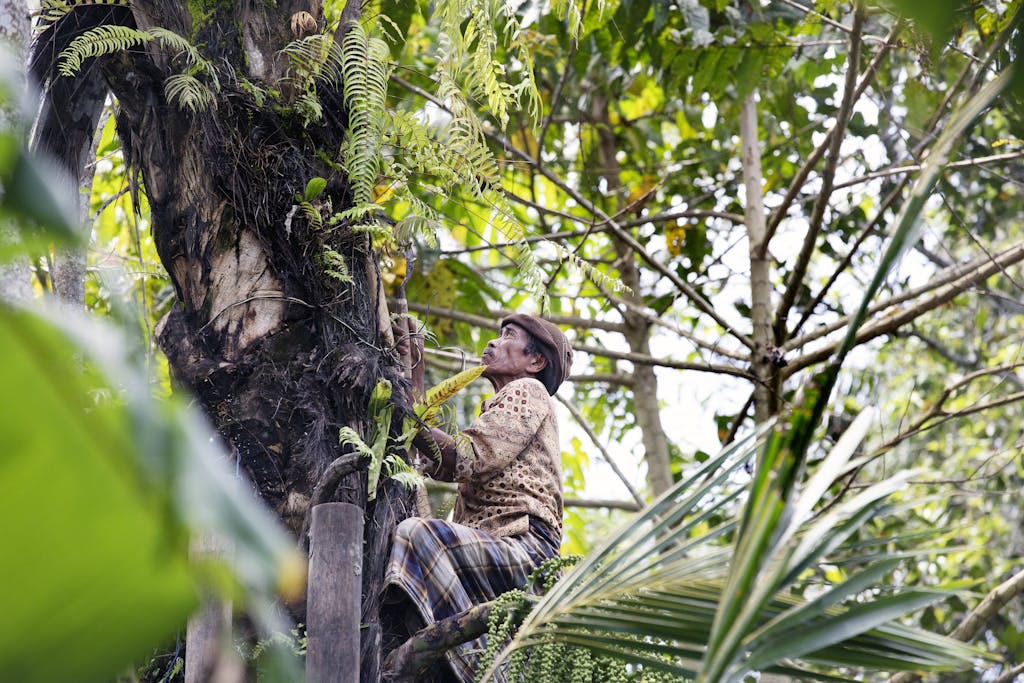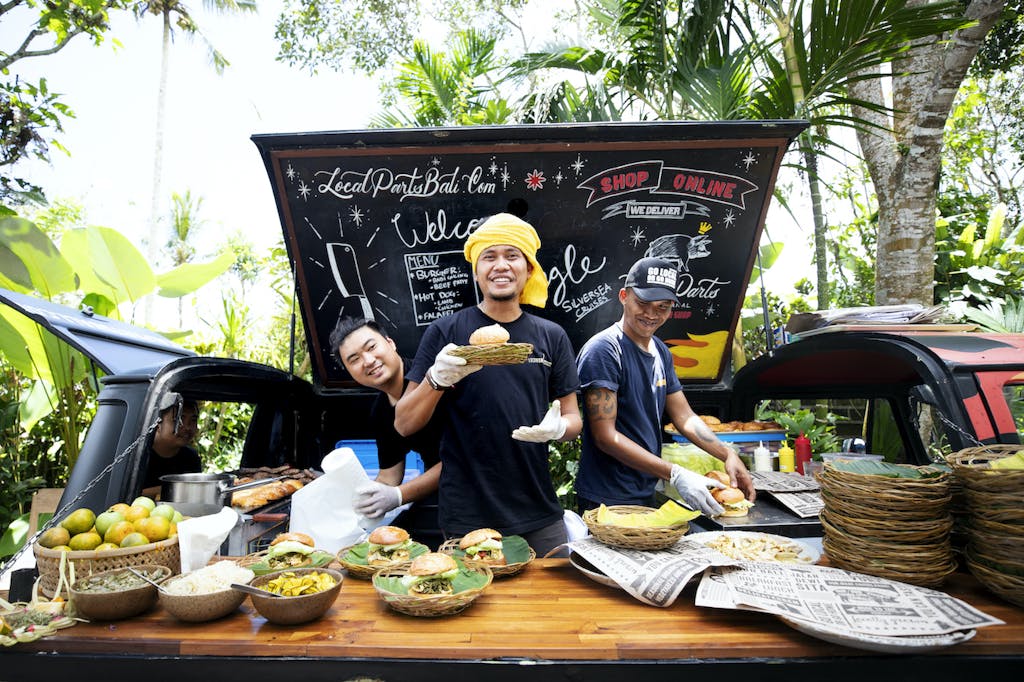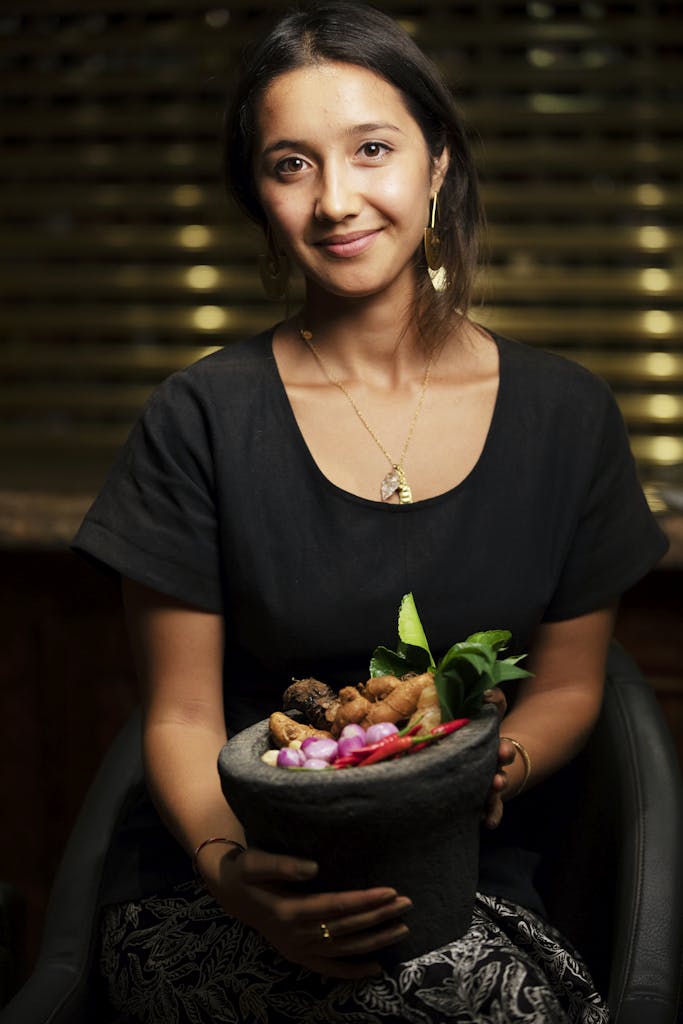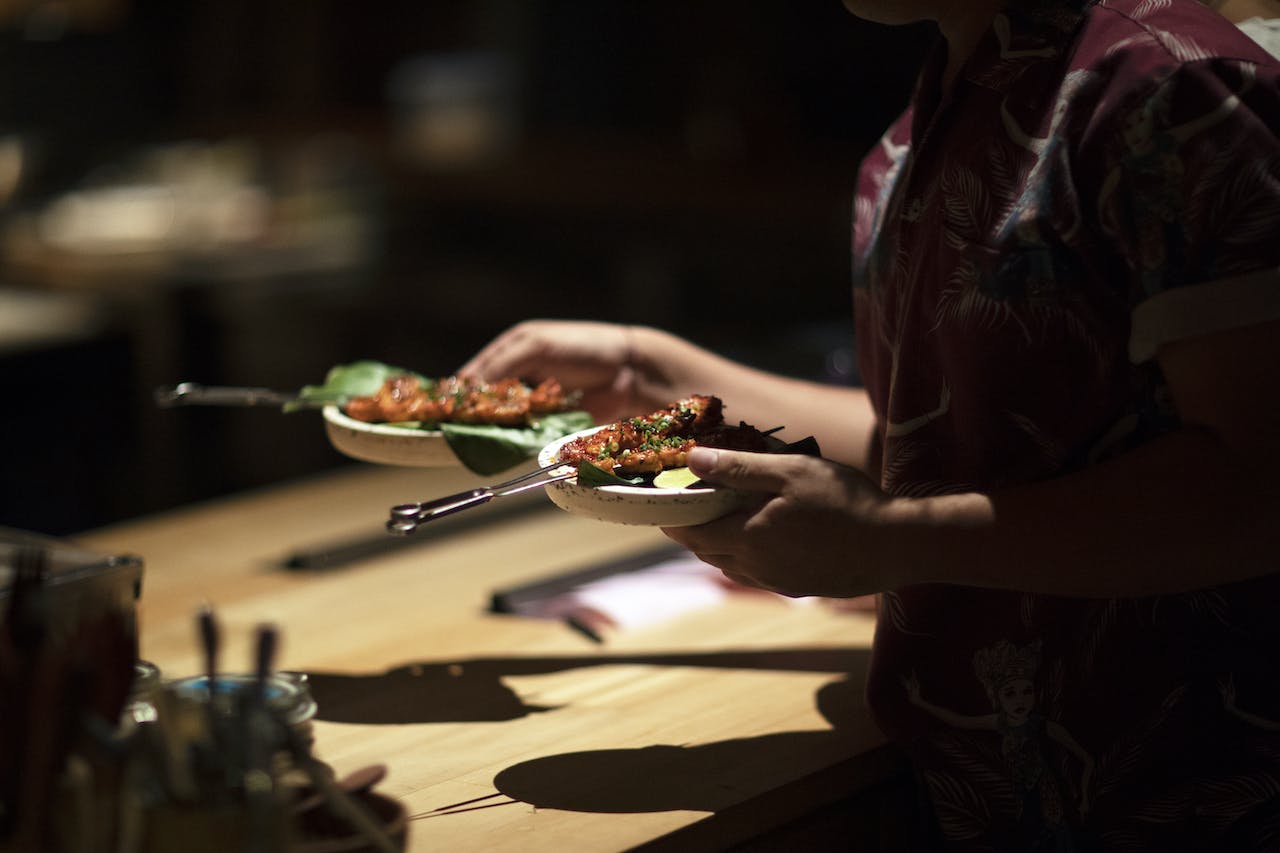In Bali, Food is the Gateway to Balinese Culture
On this profoundly spiritual Indonesian island, one where visitors quickly learn that Bali food culture plays a crucial symbolic role in daily life and ceremonies, a day called Nyepi is particularly special. Otherwise known as the ‘Day of Silence’ for the largely Hindu population, it demands 24 hours of silence and meditation — including no internet access — as well as fasting by all able-bodied adults.
Consequently, no food had passed the lips of millions of Balinese for an entire day, so by the time this visitor arrived and the fast had just been broken, the island’s glorious culinary kaleidoscope of flavors, colors, textures, aromas and ingredients were being appreciated even more enthusiastically than usual.
The beguiling destination would reveal herself through multiple dishes, but three Bali food experiences in particular stood out for what they revealed about Balinese culture.

1. Lawar bebek at Kaum
The first came in the form of a beautifully-curated dinner by Chef Wayan Kresnayasa at Kaum, a restaurant in Seminyak’s hip Potato Head Beach Club. Originally from the tiny neighboring island of Nusa Penida, Chef Wayan had also worked in Michelin-starred restaurants including New York’s Blue Hill Stone Barns and Chicago’s Acadia.
To a soundtrack of waves crashing on the shore just meters away, he and his team presented a series of brilliant, vibrant plates that represented some of Indonesia’s very best traditional recipes.
There was the familiar classic of gado-gado where crunchy fresh vegetables were tossed in slightly-spiced peanut dressing, or the more unusual batagor from West Java that melded fish and prawn in crispy dumplings that were served with a spicy cashew and soy sauce.
From Bali itself, one dish which stood out was lawar bebek, a salad of ground duck meat that had been tossed in a dressing of red chili and lesser galangal — a herb which was to become familiar. It was dotted with crackling made from the duck skin, providing a textural counterpoint to add to the deep and intense spices, the layers of which spoke volumes about Bali’s love of complex flavors, often through sambal sauces of varying intensity and heat.
2. Babi guling at Nusantara by Locavore
Similar lessons came the next day at a restaurant called Nusantara by Locavore. The elegant but understated space was launched by Dutchman Eelke Plasmeijer and Indonesian Ray Adriansyah, also chef-owners at what is arguably Bali’s most famous dining destination called Locavore, thanks to its place on the prestigious Asia’s 50 Best Restaurants list.

Together with their team, they crafted a customized Balinese culinary experience like no other. At a remote farm in the hills, there was a chance to experience the extraordinary diversity and richness of produce from the island’s rich volcanic soil. Local farmers deftly climbed trees to harvest palm sugar, while wild produce abounded, including tiny eggplant and black beans, betel leaves and papaya, wild coffee and bitter gourd, as well as unusual herbs and spices like wood sorrel.
In a clearing in the jungle overlooking tiered rice paddies came the biggest surprise as the Locavore team had navigated a compact food truck and set up a traditional Balinese sucking pig roast called babi guling, the island’s most famous dish. The delicious aromatic roast pork, combining fattier belly with crispy skin, was served burger-style in buns with vibrant dressings and homemade pickles.

However, it was a breakfast dish at their Nusantara restaurant that lived longest in the memory. They had served an Indonesian classic called nasi campur, a combination of rice, vegetables, meat and sambal sauces. But as always in Indonesia, the description couldn’t begin to do it justice.
The rice had a yellow tinge having been cooked with turmeric, garlic and aromatic ginger while the chicken had first been steamed, then shredded, mixed with roasted shallots, garlic, chilis, coconut oil and kaffir lime leaves. There was an egg recipe from Java which meant braising it for three hours in more than a dozen spices. Pork belly had been deep fried and mixed with turmeric and garlic.
“Every single village, cook and kitchen has their own take on different ingredients and dishes. You could go to a neighbor and they’d do something completely different… You can travel across Bali and feel like you’re going to different islands.”
Maya Kerthyasa, Balinese-Australian Food writer
To accompany: a tomato sambal made from tomatoes fried with chili, garlic and shrimp paste, as well as grated coconut. Vegetables included fern tips deep fried with chilis, shallots, garlic, salt and pepper, while crispy and slightly-sweet tiny fish added the final layer of flavor and texture.
Incredibly, this sensational dish is a humble classic eaten daily by millions to start the day. If ever there was a plate to demonstrate both Indonesia and Bali’s obsession with food, then nasi campur was it.
Insights into Balinese culture and cuisine
A young half Balinese and half Australian cookery writer called Maya Kerthyasa then provided fascinating insights into the island’s cuisine, notably the critical symbolic role of food in daily life and religion, in presentations dotted with recipes and tastes of more of the island’s countless dishes.
As she explained, “Every single village, cook and kitchen has their own take on different ingredients and dishes. You could go to a neighbor and they’d do something completely different — how much galangal they use, whether or not you need lemongrass in a dish. You can travel across Bali and feel like you’re going to different islands.”

She prepared a colorful traditional chopped salad called lawar putih that is made for every significant ceremony on the island. In it, the three main colors represent three different deities. For Shiva, the destroyer god, there’s red, from pig or duck blood that is added to coconut. For Vishnu, the preserver, the color is green from fern tips, snake beans and jackfruit. Finally, for Brahma, the creator, it’s white from fresh grated coconut and chicken.
The importance of chopping techniques quickly became apparent: “Things have to be super finely chopped. Food is an offering so has to look beautiful and worthy of the gods eating it. Chopping is meditative, so you really have to focus and put your energy and soul into it. If you’re angry, the energy flows into the food.”
In addition to the salad’s dozen base ingredients there was also sambal goreng made from shrimp paste, garlic, chili and shallots. The spice for the chicken, called base rajang, combined turmeric, galangal, lesser galangal, ginger, coriander seed, lemongrass, chili and salam leaves. Then there was also suna cekuh with coriander, coconut, candlenut and more.
The finished dish not only delivered multiple layers of flavor, but also revealed familiar and unfamiliar ingredients that carried profound meaning and insights, a lesson in culture as much as in taste.
Are you inspired to taste the unique flavors of Bali? Many Silversea Asia itineraries call on this island known for delighting all of the senses.
